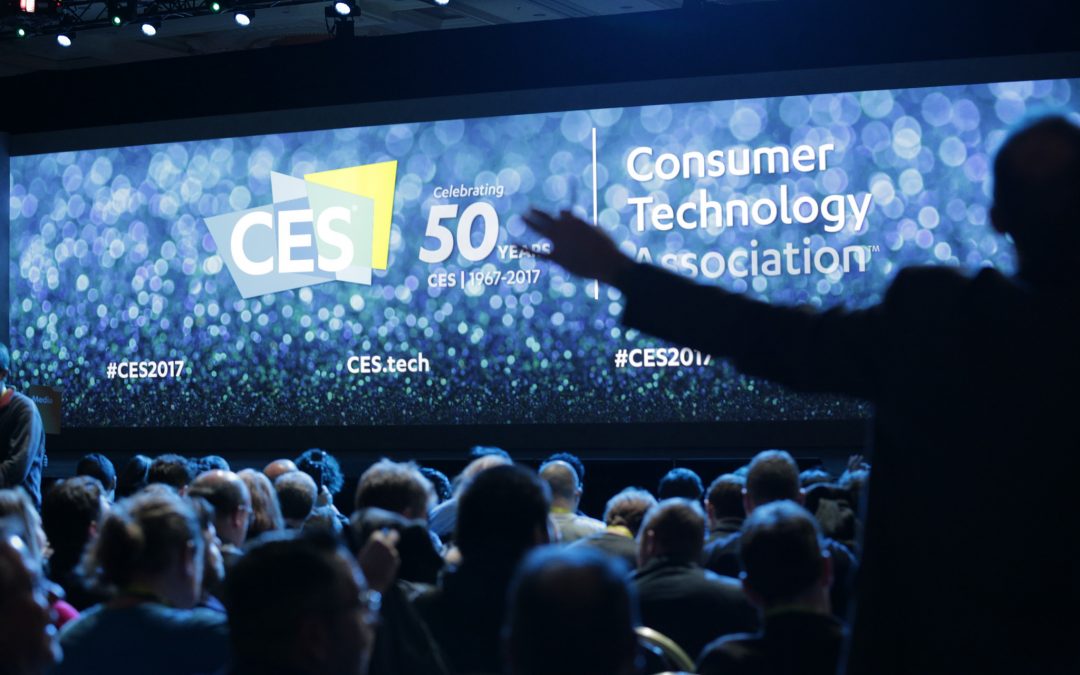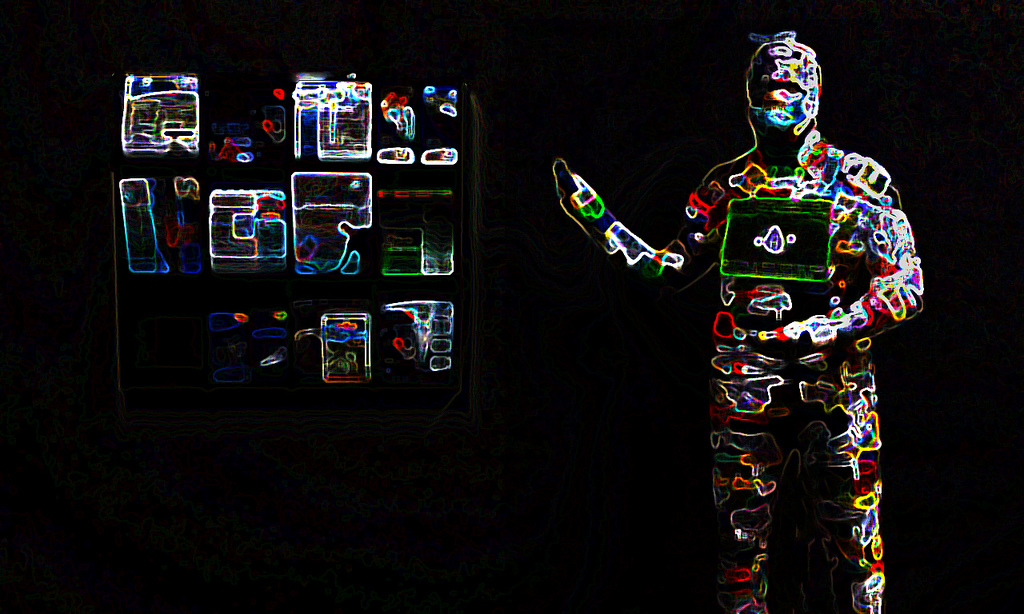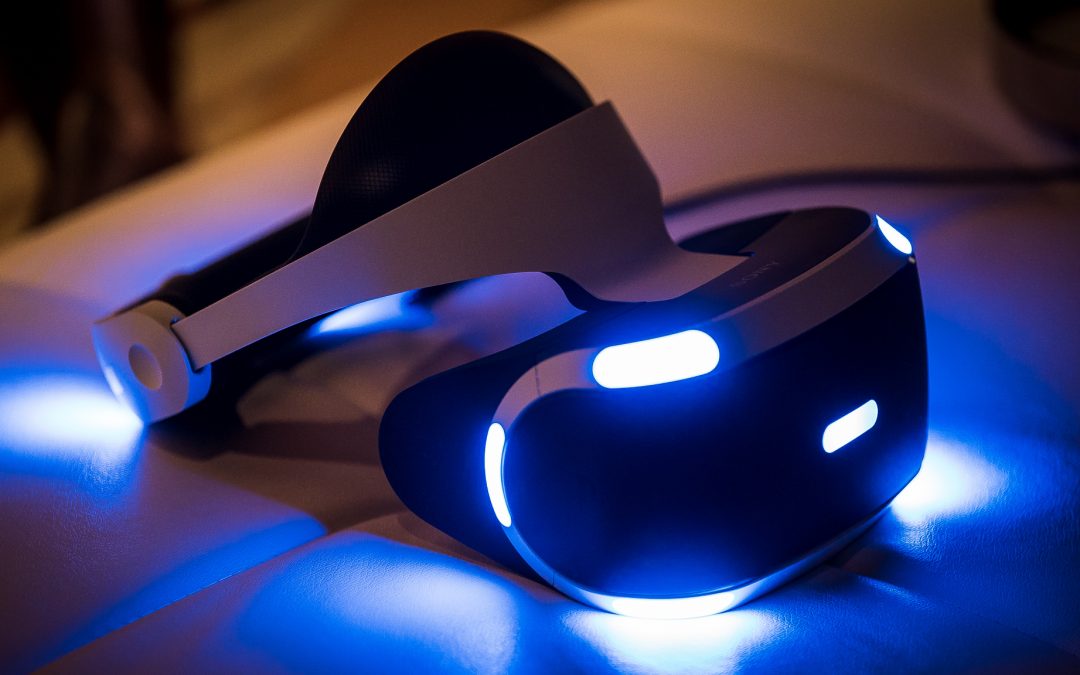
by Don Basile | Feb 15, 2017 | Sports, Tech
Every year, the Consumer Electronics Show unveils the hottest new tech products and trends, which predictably leave tech junkies drooling with anticipation. This is just as true for sports technology, which makes its debut in various iterations at CES to the delight of those like myself with interest in this growing field.
2017’s CES opened on January 5 in Las Vegas with just as much fanfare as usual, and with it a slew of amazing new products.
FitBit, which recently acquired Pepple, unveiled its new personal trainer app. It is also partnering with nutrition app Habit, indoor training bike company Peloton, and VR sports pioneer VirZOOM, and even Uber — though we may just have to wait and see what comes of these. Nonetheless, FitBit has proven itself an industry leader in athletic wearable tech.
Another product that cropped up at CES was Athlete Recovery Sleepwear, introduced by Under Armor. In partnership with Tom Brady, Under Armor’s product promises to help regulate body temperature and improve sleep for better daytime performance.
Other smart apparel at CES include the Pro Team Shirt, which comfortable operates as a heart monitor and GPS, a smart baseball training shirt from SwingIQ, and a smart running shoe by Sensoria and VIVOBAREFOOT.
Biometric data wearables are also proving to be a trend, and the less visible, the better. According to Sports Illustrated, a trend called “hearables,” as demonstrated by in-ear data trackers by Bodytrak, KUAI, and the Dash. These small devices are perfect for collecting internal metrics, like core body temperature, while also having the ability to play music. Fun!
All in all, it looks like another successful CES for athletes and for fans. It’s clearer than ever that as technology gets more advanced, so does the athletic prospects and fan experience of those that adopt it.

by Don Basile | Dec 26, 2016 | Sports, Tech
As technology becomes omnipresent in people’s lives–people go about their lives smartphone in hand–it follows that we would no longer have to carry technology, but simply slip it on. Smartwatches and fitness trackers are the first widespread wave of wearable technology, but they certainly will not be the last. These wrist devices are already gathering vast amounts of information about their wearers that can be translated into lifestyle research, which will inevitably lead to even more convenient tech accessories.
The trick with wearable technology, however, has not been ease of use, but style. The trendsetters who pioneer new fashion styles could also pave the way for wearable tech, but it will need to look the part. The contradiction is in the name: for technology to be wearable, it will need to look enough like fashion. But tech geeks have never been known as fashion plates, so what happens when these two worlds collide?
For decades, Apple has been the frontrunner for sleek product design, and indeed, their Apple Watch–like their phones–can now command a wait. However, a wearable not only needs to look good enough to be shown off, but needs to function well enough to become essential. Otherwise, why wear it in the first place? Fashion is famously ephemeral, but wearable technology cannot afford to be so short-lived. Although new models will be released, both the functionality and aesthetic need to meet certain standards for wearable tech to be fully integrated into people’s lives.
Wearable technology also offers a valuable service to athletes that could make it a functional part of sports uniforms. Major League Baseball players experimented with wearable technology this past year on a voluntary basis. Approved devices were evaluated and tested before they were allowed on the field, and rules govern the gathering and use of information. But wearable technology could greatly help athletes and their support staff monitor players’ health and performance when they are most active.
Technology isn’t going away, which means it will likely become even more integral to our daily lives. What better way to weave technology into the day-to-day than by wearing it?

by Don Basile | Dec 9, 2016 | Sports, Tech
These days, the stadium is more than just a vessel–it’s an experience in and of itself. With new technology cropping up and improving every year, sports venues are doing their best to stay up-to-date. Certain elements are this are more than just nice to have–they are both necessities and opportunities.
Take wifi, for example. While a decade ago, fans might be content to keep their smartphones away during a game, the stakes are higher now. Connectivity is a priority for younger fans, and Cisco reports that Internet is “as important as air, water, food and shelter to one in three college students and young professionals.” This may sound hyperbolic, but think about it. Many of us live a significant portion of our lives online, with our social and professional lives hinging on Internet access. Without wifi, you’re probably going to lose your fans at halftime.
Then, there’s improved home technology. High definition big screen TVs make viewing a game at home just as awesome, twice as comfortable, and much cheaper than visiting the game physically. So there has to be something at the stadium fans can’t get at home. How about in-arena interactive hotspots? Sports leagues and brands are both leaning into this trend by building high-tech experiences that enhance fans’ stadium experience.
But don’t forget, the smartphone might be the biggest opportunity of all, and with fast, easy-access wifi, both advertisers and national leagues can hook into fans’ phones. Think seat upgrades, easy food and beverage purchasing, insider facts and insights, or any other number of modern, digital conveniences.
For an example of a high-tech stadium, look no further than Brooklyn’s Barclays center, one of the most connected stadiums in the world. Thanks to smart design and innovative ideas, fans can upgrade seats and even get notifications when the restroom line is shortest.
There’s also the in-process Mercedes Benz Stadium, which I’ve blogged about previously. In partnership with the Atlanta Falcons, IBM, and Daktronics, the smart stadium will give fans 360-degree views of the on-field action, employing state of the art sustainable technologies all the while. The goal is to give fans the best experience possible, complete with awesome technology, while using as little energy as possible.
If the stadiums of the future keep integrating technology that delights fans, provides perks, and saves energy to boot, the world of sports is in for an exciting ride in coming decades. After all, sports are all about connecting communities over shared passions. What better way to do that than going all in on digital?

by Don Basile | Dec 9, 2016 | Sports, Tech
Virtual reality technology is slowly seeping into several industries, including marketing and casino gaming and even travel, as companies realize the power of virtual experiences. Now, we’re seeing virtual reality technology making waves in the fitness industry with the introduction of a full-body fitness program that aims to help players improve their fitness level without having to set foot in a gym.
Ryan DeLuca of Boise, Indiana, retired from Bodybuilding.com and then teamed up with tech designer Preston Lewis to launch a new company centered on fitness: Black Box.
Black Box creates a full-body workout program customized for the user and allows players to complete their challenges online with others from their home or office. Workouts are completed entirely in virtual reality so a gym membership becomes obsolete.
The creators of Black Box are currently testing the concept and experience in their office, working through all the drill sequences and developing a scoring system. It’s been coined, ‘the gym of the future’ and could very well lead a new generation of gym experiences that give users a chance to completely immerse themselves in a fitness experience while getting in shape.
The game is designed as an adventure or mission so it doesn’t feel like you are working out. According to Black Box VR, “You aren’t working out. You are saving a city. Or solving a mystery. Or finding the treasure….Functional fitness in a fictional world.”
The company has developed three 40-minute exercise routines with different scenarios and have integrated props, such as electronic cable systems, for resistance training into the game. The app that goes along with the game keeps track of performance and all the details of the workout so the user can make adjustments and set goals.
Black Box is getting ready to revolutionize the fitness industry with a no-gym-required workout program. It could very well be paving the way to the future of fitness where simulating movement in a fictional world is just as effective — and maybe even more so — than lifting a dumbbell or running on a treadmill at the local gym.

by Don Basile | Dec 2, 2016 | Sports, Tech
As the holidays approach, it’s not just mistletoe, snow, and eggnog on people’s mind — it’s the anxiety-inducing prospect of gift-giving. What should you buy? What should you ask for? Socks, again? Or something more exciting? Whether you’re a confident shopper or not, it can be difficult to come up with good ideas year after year.
New technology can make a superb gift both to wrap and unwrap, but it can also be risky. Tech advances fairly rapidly, meaning most products have a shelf life that often ends with the next big upgrade. But if you’re constantly waiting for the “best” tech product, you’ll be waiting forever.
This seems to be the case with wearable technology. People sit around waiting for smartwatches to get smarter and end up missing out on all the great things they have to offer.
Maybe this is the year to embrace wearable technology, or maybe it’s not. Whatever the case, I submit to you several ideas that I think would make great gifts this holiday season.
With the New Year comes new goals, of which fitness is often one. FitBits make great gifts for close family members or loved ones that have expressed an interest. The newest versions are even better than the last: the FitBit Charge 2 now includes cardio monitoring and guided breathing; the Flex 2 is now smaller, more stylish, and water-resistant.
Samsung Gear is less about fitness than it is style and efficiency. The release date and pricing have not been released yet, but it will likely hit the shelves before the holiday. The S3 will be the first device to connect to high-speed LTE networks from its carrier. With the look of a luxury watch and the function of a cellular companion, word has it the watch will have a four-day battery life compared to the Apple Watch 2’s 18 hours.
Transitioning from the wrist to the head, one can’t talk about wearable technology anymore without mention of virtual reality (VR) and augmented reality (AR). Sony’s PlayStation VR, released on October 31, has a 5.7” display and a 100-degree field of vision.
On to AR, the Microsoft Hololens has been the talk of the tech world for some time now, but has yet to become commercially available. That all could change between now and the end of the year. The HoloLens overlays “holograms” onto your field of vision and lets you interact by tracking your head and hand movements.
These are just a few of the up-and-coming wearables in the tech world. In my opinion, a high-tech holiday season is a happy one. And if you can’t have a white Christmas, you might as well have a wearable one.

by Don Basile | Nov 18, 2016 | Sports, Tech
Gatorade is more than just a beverage that makes TV athletes sweat blue. The brand has long been associated with sports, science, and wellness, as is evidenced by the Gatorade Science Sports Institute. The Institute and its newest satellite lab in Florida are proof of Gatorade’s continued dedication to athletic innovation.
The Gatorade Sports Science Institute (GSSI) was founded in 1985 with the mission of “helping athletes optimize their health and performance through research and education in hydration and nutrition science.” In partnership with researchers and universities, they study the effects of nutrition on athletes before, during, and after exercise.
So, what have they been up to since foundation 31 years ago? GSSI has researched exercise, nutrition, and sports equipment using the latest tools in physiology, biochemistry, and sensory response. Their results have led to superior formulations in taste and functionality. GSSI has also partnered with physicians, scientists and athletic trainers to establish a Field Testing Program to study the effects of electrolytes on athletic performance.
In other words, GSSI scientists study and develop sports nutrition and hydration. This translates to improved Gatorade products and a wealth of scientific findings to back them up.
GSSI has expanded beyond its headquarters in Barrington, Illinois in recent years, having opened up satellite labs in the UK and most recently, Bradenton, Florida. Some lucky media insiders were able to get a tour of the Florida satellite lab at IMG Academy just this month, and their account shows off the innovative work behind the scenes.
Sport Techie brings us exclusive photos and videos from the GSSI satellite lab, where they sampled new Gatorade products and the technology used by GSSI and its athletes. This included the BodPod, an air displacement plethysmography test that determines body composition for athletes of all ages; the Fuel Profile Test, which evaluates of how an athlete uses energy across a range of exercise intensities; and the Gx sports fuel customization platform, which includes a bottle with flip cap, pods with Gatorade formula and additional tech to provide athlete fueling recommendations.
GSSI shows the amazing ways in which sport technology can monitor our health and maximize athletic performance. Ultimately, their research should help athletes understand what their bodies need to keep healthy, strong, and moving.





